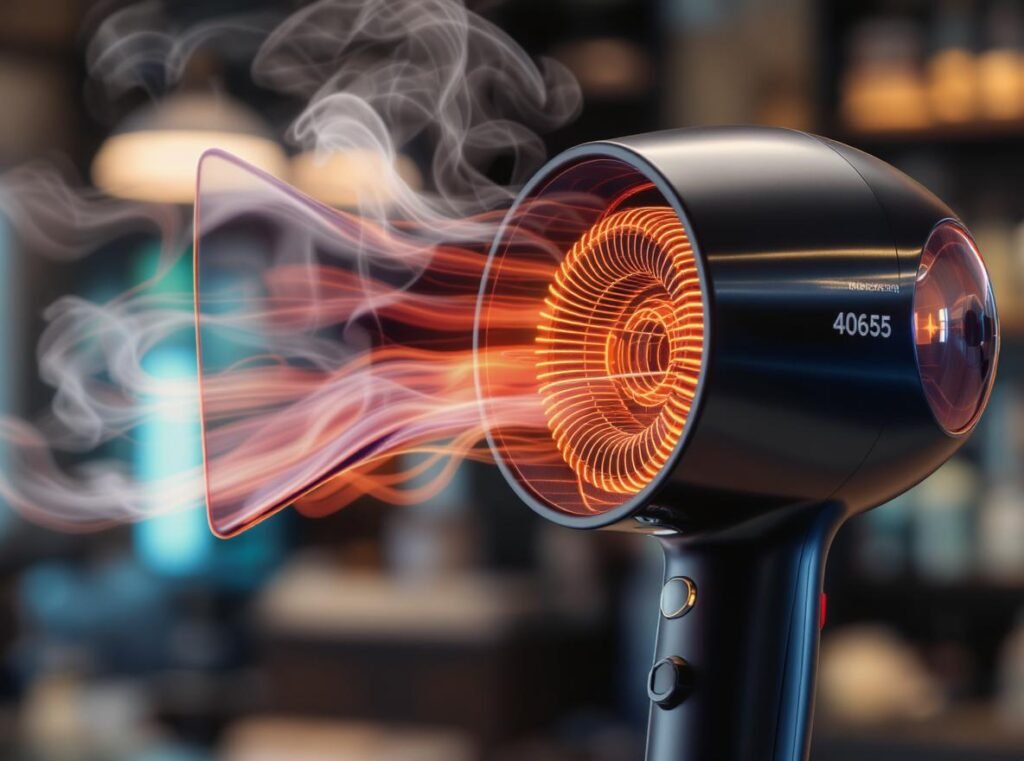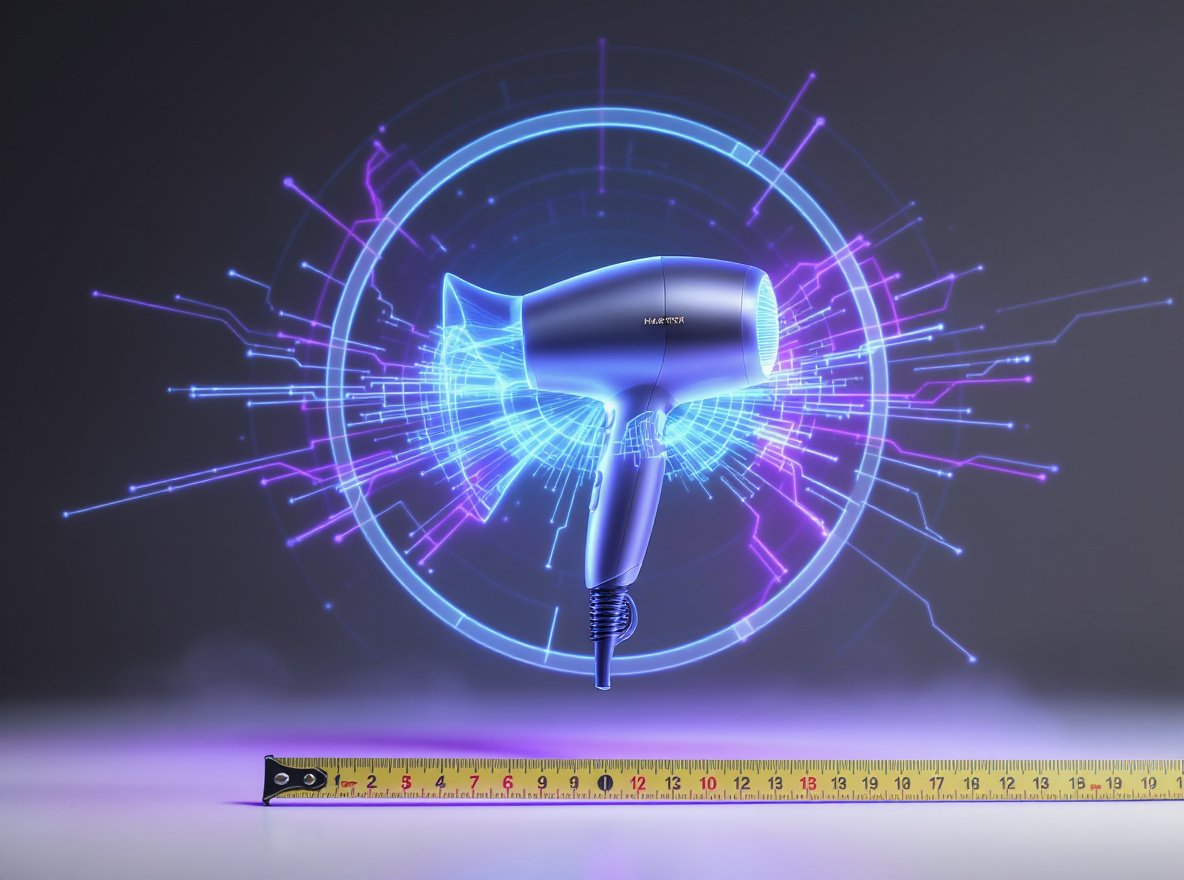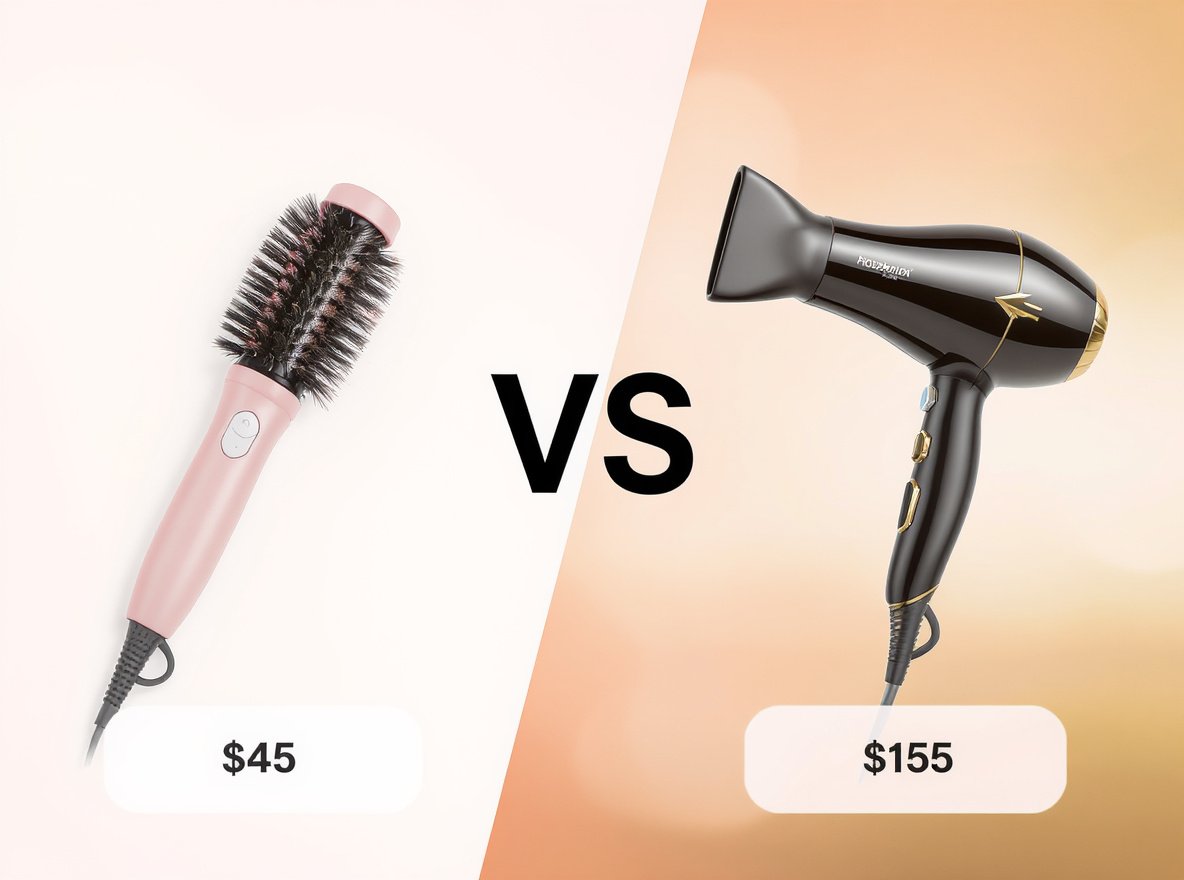Struggling with lukewarm air when you need intense heat for quick styling? A hair dryer that doesn’t get hot enough can double your drying time and leave you frustrated with poor results. This common problem affects both professional salons and home users worldwide.
Your hair dryer isn’t getting hot enough typically due to faulty heating elements, clogged air filters, malfunctioning thermostats, or overheating protection activation. Most issues can be resolved through proper cleaning, component inspection, or professional repair.
Don’t let inadequate heat ruin your styling routine. Let’s explore the exact causes and practical solutions to restore your hair dryer’s optimal performance.
Table of Contents
ToggleWhat Temperature Should a Hair Dryer Reach?
Understanding normal operating temperatures helps you identify when your dryer underperforms.
Most hair dryers operate between 80°F and 140°F (27°C to 60°C), with high settings reaching up to 140°F. This temperature range provides effective drying while minimizing heat damage to hair and scalp.
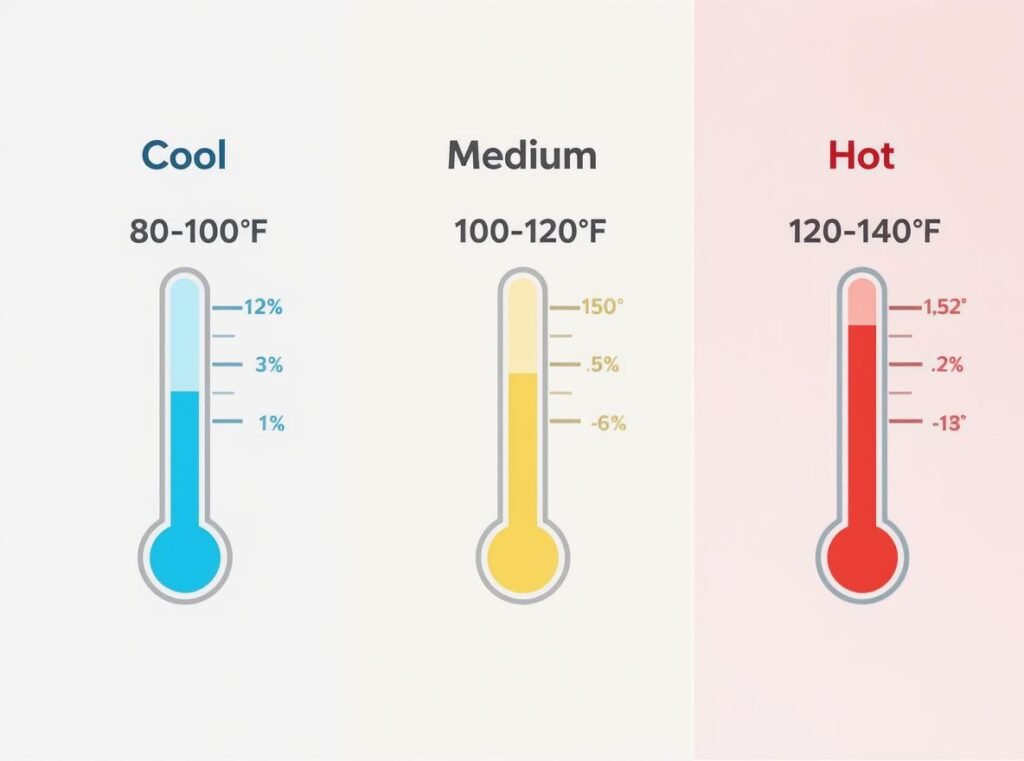
Professional hair dryers maintain consistent temperatures across these ranges, while consumer models may vary slightly. The highest setting delivers maximum heat for thick, coarse hair or quick styling needs.
Temperature guidelines for different hair types:
| Hair Type | Recommended Temperature | Heat Setting |
|---|---|---|
| Fine, damaged hair | 80-100°F (27-38°C) | Low |
| Normal hair | 100-120°F (38-49°C) | Medium |
| Thick, coarse hair | 120-140°F (49-60°C) | High |
Understanding these ranges helps you determine whether your dryer’s heat output meets normal performance standards.
Why Is My Hair Dryer Blowing Cold Air Only?
Complete loss of heat indicates specific mechanical failures requiring targeted solutions.
Hair dryers blow only cold air due to broken heating elements, blown thermal fuses, malfunctioning thermostats, clogged air filters restricting airflow, or electrical faults interrupting power to heating components.
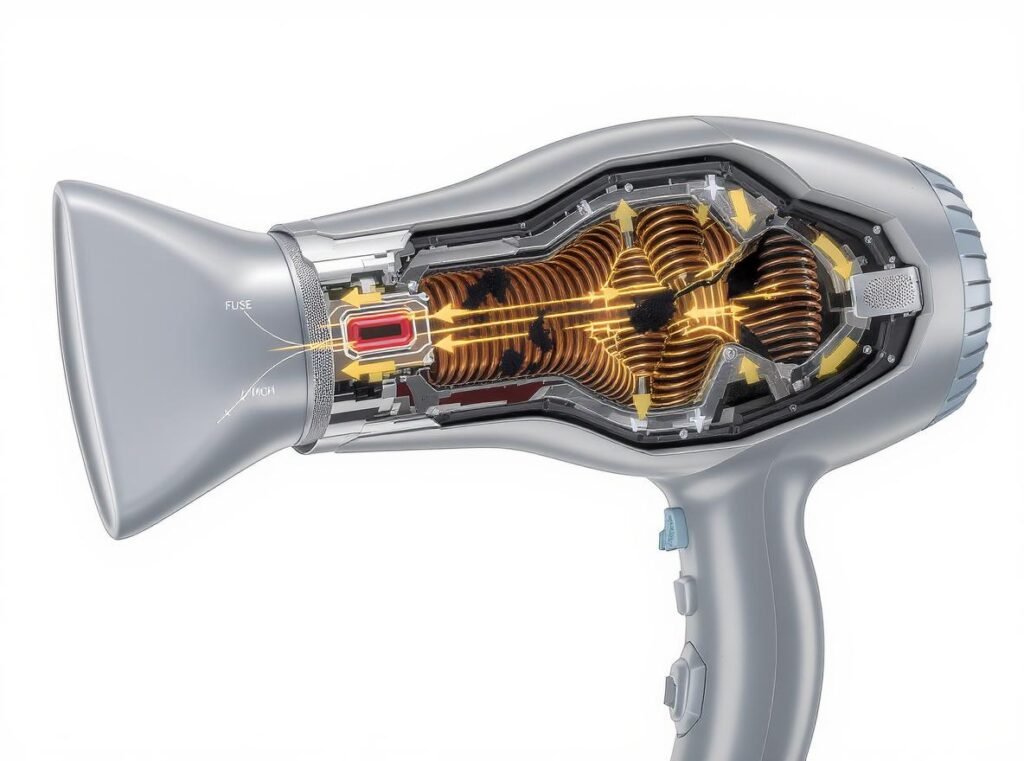
When heating elements burn out or become damaged, they cannot generate any heat despite normal airflow. This complete failure typically requires component replacement rather than simple maintenance.
| Problem Type | Symptoms | Repair Difficulty | Typical Cost |
|---|---|---|---|
| Heating element failure | No heat, normal airflow | High | $30-60 |
| Thermal fuse blown | Sudden complete shutoff | Medium | $10-20 |
| Thermostat malfunction | Inconsistent heating | Medium | $15-35 |
| Severe filter blockage | Overheating, shutoffs | Low | $0 (cleaning) |
| Internal wiring damage | Intermittent operation | High | $25-50 |
Start troubleshooting by checking temperature settings and ensuring you haven’t accidentally engaged cool-shot mode before investigating internal components.
How Do I Fix a Hair Dryer That Won’t Heat Properly?
Systematic troubleshooting helps identify whether you need simple maintenance or professional repair.
Start with basic checks: clean air filters thoroughly, verify correct temperature settings, test different outlets for voltage issues, and inspect power cords for damage. For persistent problems, examine internal components or consult professionals.
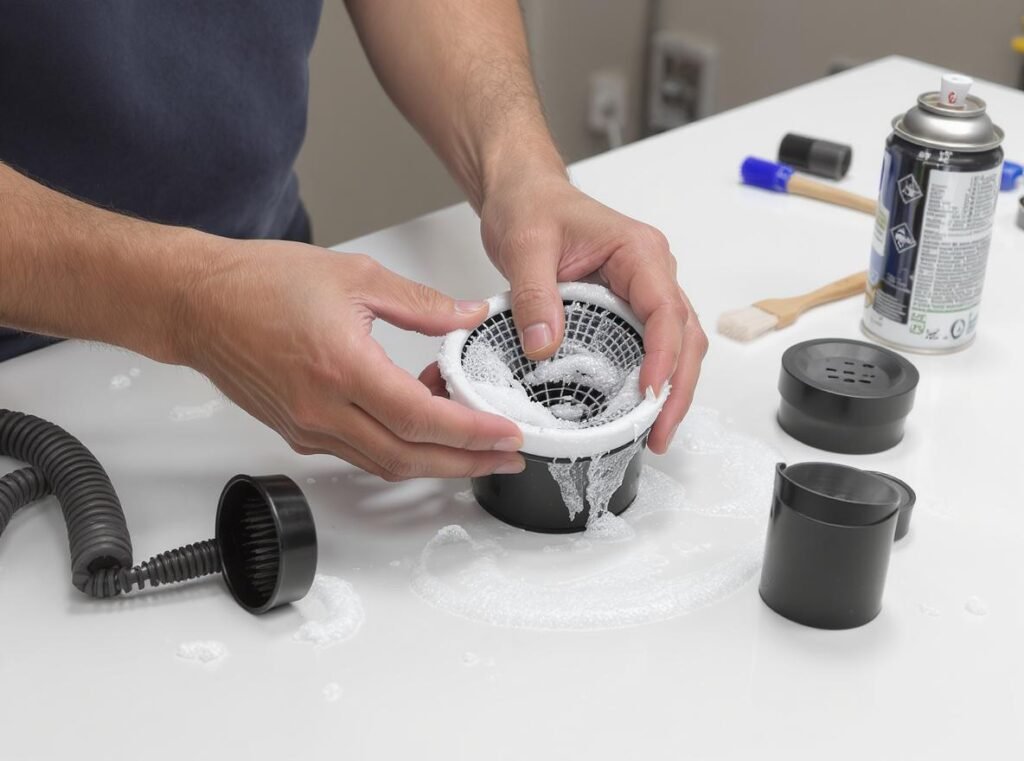
Begin troubleshooting with these systematic steps:
| Troubleshooting Step | What to Check | Expected Result | If Failed |
|---|---|---|---|
| Settings Verification | Temperature/speed controls | Heat on high setting | Check for cool-shot activation |
| Power Testing | Different electrical outlets | Consistent performance | Call electrician for outlet issues |
| Visual Inspection | Power cord and plug damage | No fraying or burn marks | Replace cord or entire unit |
| Filter Cleaning | Remove and clean all filters | Improved airflow | Deep clean or replace filters |
| Reset Function | Press reset button if available | Normal operation resume | Professional diagnosis needed |
Detailed Cleaning Process:
- Unplug dryer and remove rear filter cover
- Clean removable filters with warm, soapy water
- Use compressed air to blow out internal dust accumulation
- Remove visible hair and lint from intake grilles
- Allow all components to dry completely before reassembly
Advanced Troubleshooting:
- Reset the dryer using any available reset button
- Allow overheated units to cool completely before retesting
- Check for loose internal connections if comfortable with disassembly
- Look for visible heating element damage or burn marks
For electrical issues or component replacement needs, professional diagnosis often proves more cost-effective than attempting complex repairs.
Can a Clogged Filter Cause Heating Problems?
Filter blockages create cascading effects that significantly impact your dryer’s heating performance.
Yes, clogged filters restrict airflow, causing overheating protection to activate, heating elements to operate inefficiently, and automatic shutoffs to engage. Regular filter cleaning prevents most heat-related performance issues.
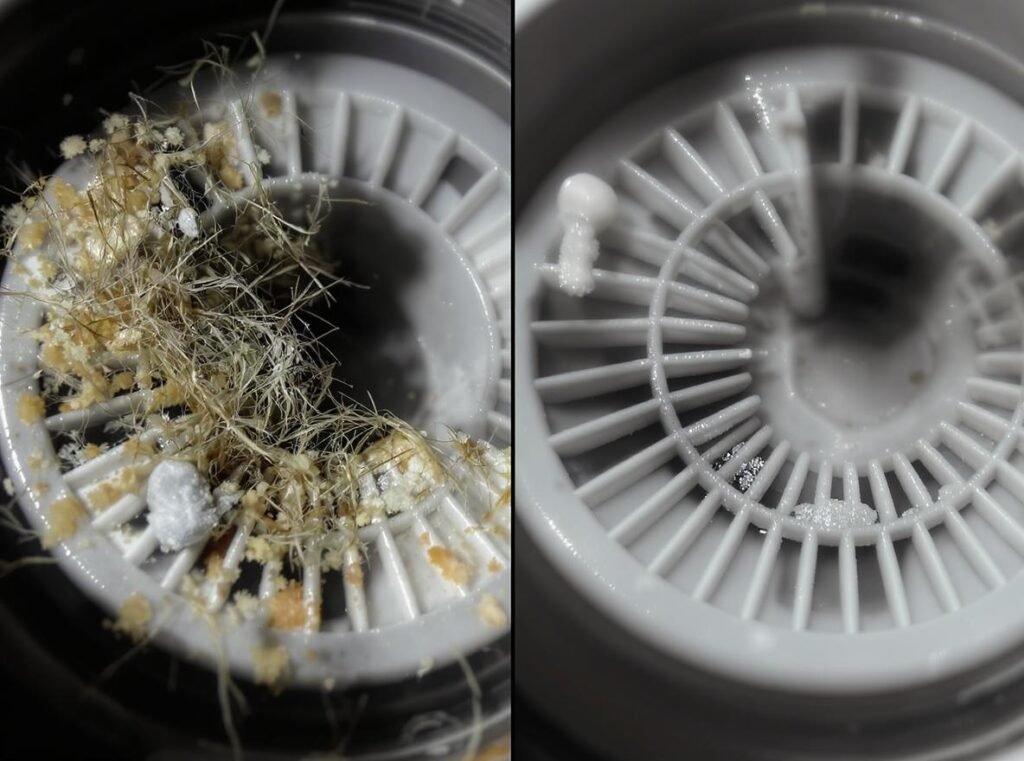
Airflow restriction affects heating through multiple mechanisms. Reduced air circulation prevents proper heat dissipation from heating elements, triggering safety systems designed to prevent overheating and potential fire hazards.
When filters become severely clogged:
- Overheating protection activates: Safety systems shut off heating to prevent damage
- Heat transfer decreases: Less air passes over heating coils to carry warmth
- Component stress increases: Heating elements work harder with poor ventilation
- Energy efficiency drops: More power consumed for less heat output
Professional environments require daily filter maintenance due to constant use and high debris volume. Even minor blockages can significantly impact performance in commercial settings.
| Usage Environment | Filter Cleaning Frequency | Impact of Delays | Recommended Action |
|---|---|---|---|
| Home – Daily use | Weekly | Gradual heat loss | Set weekly reminders |
| Home – Occasional use | Monthly | Minimal impact | Monthly deep clean |
| Professional salon | Daily | Immediate performance loss | End-of-day routine |
| Hotel/hospitality | Every 2-3 days | Guest complaints possible | Staff training essential |
Filter Maintenance Benefits:
- Prevents 80% of overheating issues
- Extends dryer lifespan by 2-3 years
- Maintains optimal energy efficiency
- Reduces fire hazard risks
| Maintenance Level | Heat Performance | Energy Efficiency | Lifespan Impact |
|---|---|---|---|
| Excellent (daily cleaning) | 95-100% | Optimal | +50% lifespan |
| Good (weekly cleaning) | 85-95% | Very good | +25% lifespan |
| Fair (monthly cleaning) | 70-85% | Reduced | Normal lifespan |
| Poor (rarely cleaned) | 40-70% | Poor | -30% lifespan |
Why Does My Hair Dryer Get Hot Then Turn Off?
Automatic shutoffs protect your device but indicate underlying problems requiring attention.
Hair dryers shut off after heating due to overheating protection triggered by blocked airflow, extended high-temperature use, or malfunctioning thermal regulation systems. This safety feature prevents damage but signals maintenance needs.
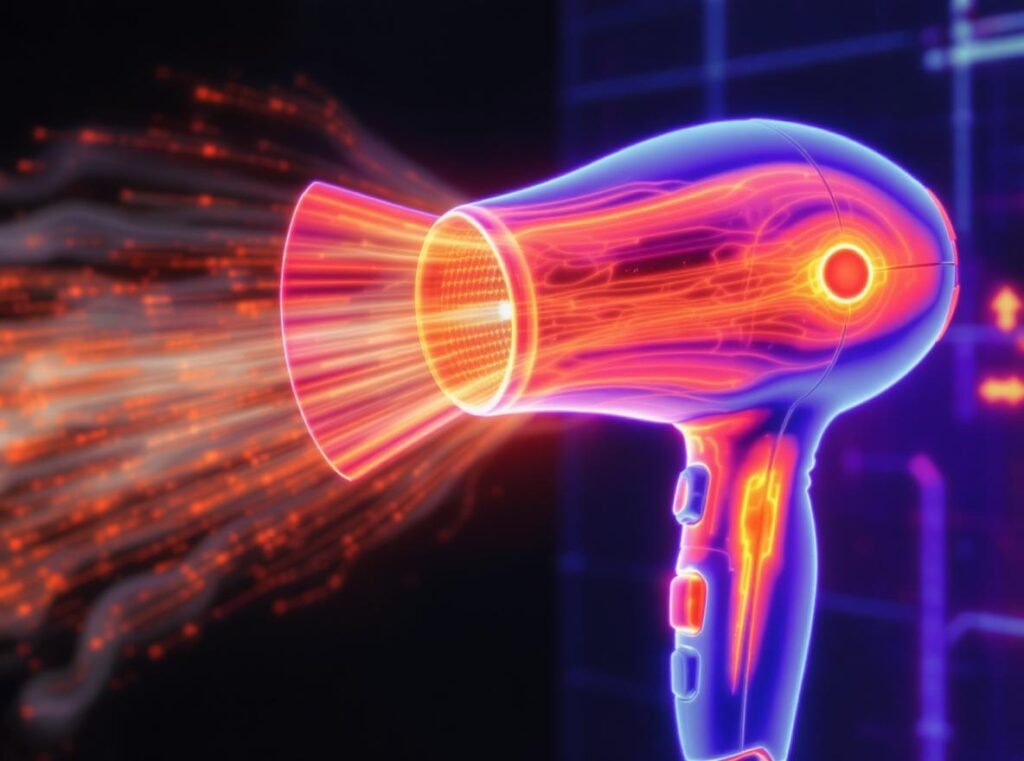
Modern dryers incorporate multiple safety mechanisms that monitor internal temperatures. When thresholds are exceeded, these systems either temporarily disable heating or shut down the entire unit.
Safety System Types:
| Protection Type | Function | Reset Method | Replacement Needed |
|---|---|---|---|
| Thermal Cutoff | Temporary shutdown when overheated | Automatic after cooling | No |
| Thermal Fuse | Permanent protection from extreme heat | None – blown permanently | Yes |
| Overload Protection | Guards against electrical surges | Manual reset button | Sometimes |
Understanding which protection activated helps determine next steps. Thermal cutoffs reset automatically once internal temperatures drop, while blown thermal fuses require professional replacement.
How Often Should I Clean My Hair Dryer?
Regular maintenance schedules prevent most heating problems before they develop into costly repairs.
Clean hair dryer filters regularly – ideally once every few weeks for normal use, or more frequently with daily use. Professional salon environments require daily cleaning due to heavy usage and increased debris accumulation.
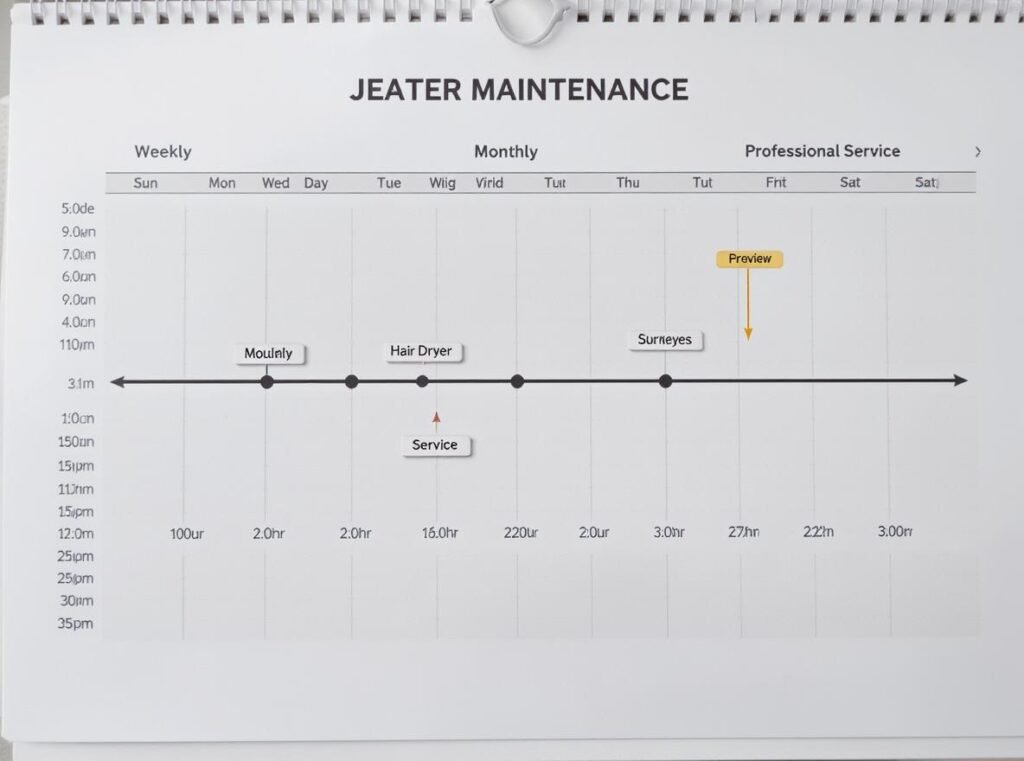
Maintenance frequency depends on usage patterns and environmental conditions:
| User Type | Usage Pattern | Filter Cleaning | Deep Maintenance | Professional Service |
|---|---|---|---|---|
| Home – Light | 2-3 times/week | Monthly | Quarterly | Annually |
| Home – Heavy | Daily use | Weekly | Monthly | Every 6 months |
| Professional | 8+ hours daily | Daily | Weekly | Monthly |
| Commercial | Continuous | Twice daily | Every 3 days | Bi-weekly |
Maintenance Task Breakdown:
- Remove visible hair and lint from intake grilles
- Wipe exterior surfaces with damp cloth
- Check power cord for damage or fraying
- Test all temperature and speed settings
Monthly Deep Cleaning:
- Disassemble removable filter components
- Wash filters with warm, soapy water
- Use compressed air for internal dust removal
- Inspect heating elements for visible damage
- Check for loose screws or component wear
Proactive maintenance extends equipment lifespan and prevents unexpected failures during important styling sessions.
What Are Signs I Need a New Hair Dryer?
Recognizing replacement indicators helps you avoid unexpected failures and maintain consistent performance.
Replace your hair dryer when it doesn’t heat up at all despite troubleshooting, experiences frequent overheating and shutoffs after cleaning, produces unusual noises or burning smells, or requires constant repairs due to repeated electrical issues.
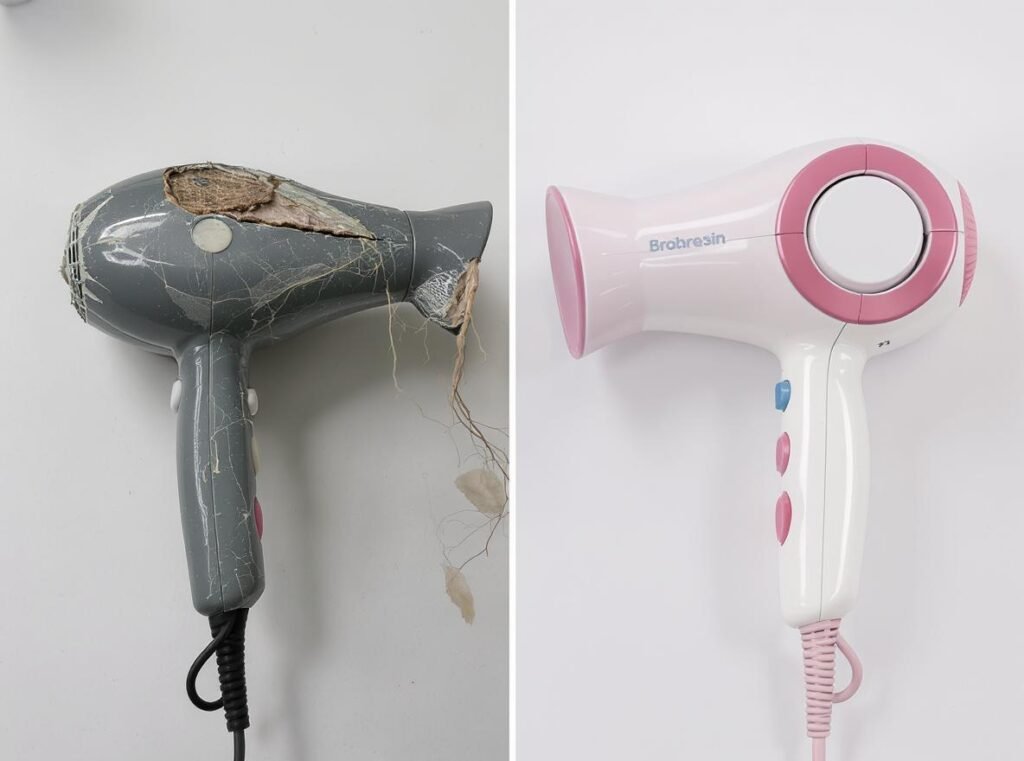
Performance degradation signals often indicate that replacement costs less than ongoing repairs:
| Warning Sign | Severity Level | Immediate Action | Replacement Urgency |
|---|---|---|---|
| Complete heating failure | Critical | Stop use immediately | Replace within days |
| Frequent overheating | High | Reduce usage, clean thoroughly | Replace within weeks |
| Unusual noises/burning smell | Critical | Discontinue use | Replace immediately |
| Visible damage to housing | Medium-High | Inspect for safety | Replace within month |
| Declining performance | Low-Medium | Increase maintenance | Monitor for 2-3 months |
Cost-Benefit Analysis for Replacement:
| Factor | Repair | Replace | Recommendation |
|---|---|---|---|
| Cost over 50% of new unit | High expense | One-time cost | Replace |
| Unit age over 3-5 years | Temporary fix | Long-term solution | Replace |
| Multiple recent failures | Ongoing costs | Reliability | Replace |
| Energy efficiency | Poor | Improved | Replace |
| Warranty coverage | None | 1-3 years | Replace |
For professional environments, equipment reliability directly impacts client satisfaction and business operations. Investing in quality replacement dryers prevents service interruptions and maintains professional standards.
Professional Replacement Timeline:
- High-use salons: Every 2-3 years
- Moderate professional use: Every 3-4 years
- Home professional use: Every 4-5 years
Which Hair Dryer Features Prevent Heating Problems?
Advanced features in modern dryers help maintain consistent performance and prevent common heating issues.
Look for dryers with removable and washable air filters, automatic shut-off and overheat protection, thermal fuses and thermostats for safety, multiple heat settings for temperature control, and quality internal components for longevity.
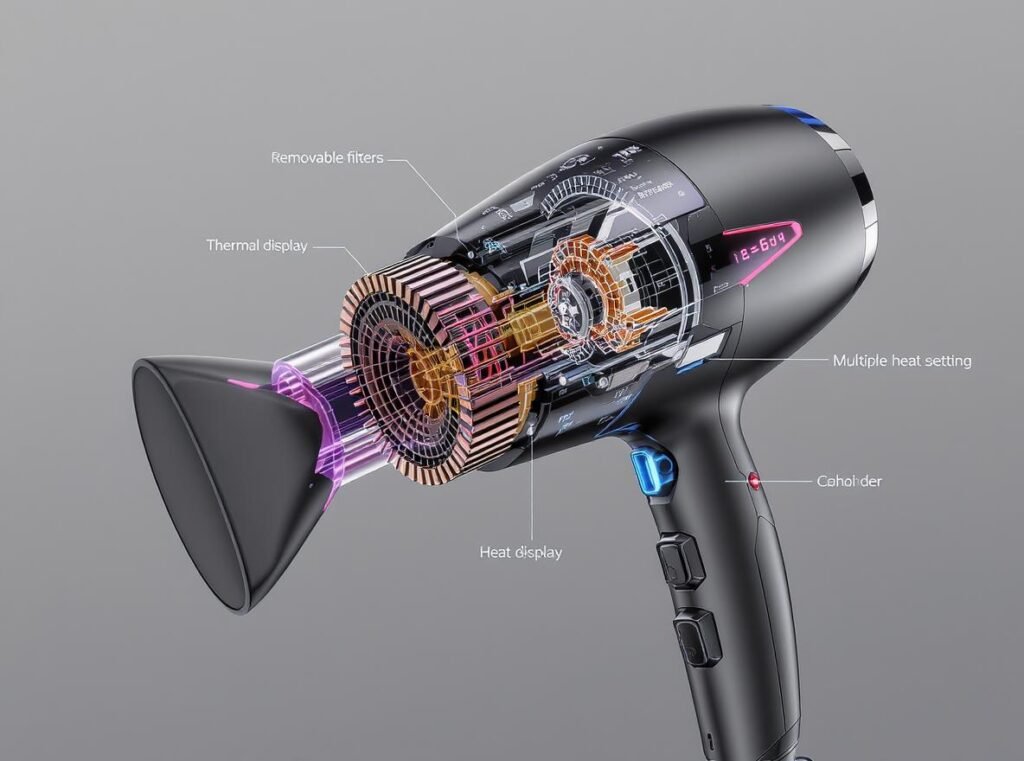
Essential preventive features address the most common heating problems:
| Feature Category | Specific Features | Problem Prevention | Professional Value |
|---|---|---|---|
| Safety Systems | Thermal fuses, auto shut-off | Overheating damage | Liability protection |
| Maintenance | Removable filters, easy access | Cleaning efficiency | Reduced downtime |
| Performance | Multiple heat settings, ceramic elements | Consistent results | Client satisfaction |
| Durability | Quality wiring, robust construction | Extended lifespan | Cost efficiency |
| User Interface | Digital displays, indicator lights | Problem detection | Professional image |
Feature Priority by User Type:
| User Category | Must-Have Features | Nice-to-Have Features | Budget Consideration |
|---|---|---|---|
| Home – Basic | Safety systems, removable filters | Digital display | $30-60 range |
| Home – Professional | All safety features, multiple settings | Ionic technology, cool shot | $60-120 range |
| Commercial – Light | Professional-grade safety, easy maintenance | Advanced displays | $80-150 range |
| Commercial – Heavy | All features, redundant safety systems | Smart diagnostics | $120-300 range |
Professional-grade features particularly benefit commercial environments. The Conason P1C high-speed hair dryer incorporates advanced safety systems, removable filters, and multiple thermal protections that address the heating problems discussed throughout this guide.
Quality Component Indicators:
- Durable heating element construction
- High-grade electrical wiring and connections
- Robust thermal protection systems
- Easy-access maintenance points
- Comprehensive warranty coverage
Choosing dryers with these preventive features reduces maintenance requirements and extends operational lifespan significantly.
Summary
Hair dryer heating problems usually stem from maintenance issues rather than irreparable damage. Regular filter cleaning, proper settings verification, and understanding safety systems solve most temperature-related performance issues. When problems persist despite maintenance, professional evaluation or replacement becomes necessary for safety and efficiency.
Ready to upgrade your hair dryer inventory with reliable, high-performance units featuring advanced heating protection? Explore our complete product collection or learn more about the Conason P1C high-speed hair dryer with removable filters and multiple thermal safety systems. Contact our team for wholesale pricing and volume discounts tailored to your business needs.

